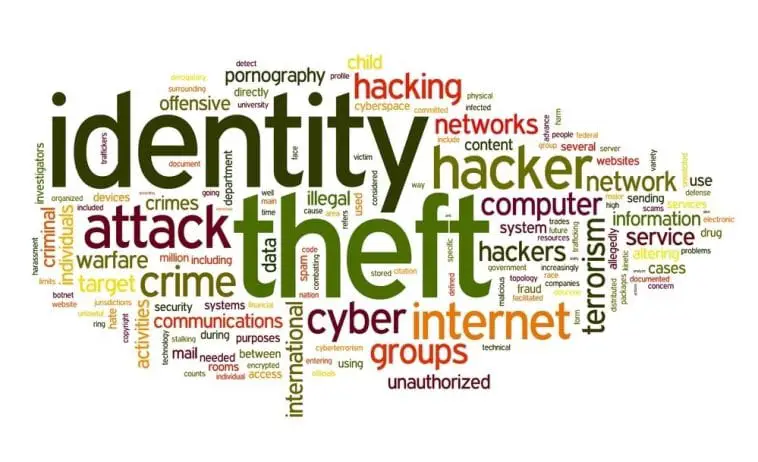It would be such a horror when one day you wake up to find that your identity has been stolen by thieves that lurk on the internet. They have accessed your bank accounts, made financial transactions under your name, taken your email and social media accounts, and done other terrible criminal activities under your name. You have been a victim of identity theft.
You have lost yourself to thieves you haven’t even met. You have been robbed of your identity.
What is Identity Theft?
Identity theft is a crime that happens when thieves obtain a person’s personal or financial information. They then assume that person’s identity to be able to take over financial transactions, purchases, or worst, committing a crime using that person’s identity.
Identity theft is now considered as one of the fastest-growing crimes in the world. A very obvious reason for the same is that we are making online transactions that made our personal information like name, address, birthday, credit card information, bank details, social security number visible online. The internet is a very vast space, and anything can happen in just a single click. We should be aware that thieves now do not only lurk in dark places or go into homes. The biggest thieves right now are those who lurk on the internet and find their biggest victim.
Identity theft is not just all about robbing information and doing financial transactions under your name. The worst part is when they use your personal information to commit a crime. The worst-case scenario is that these thieves have stolen your identity and made you a criminal.
What are the types of Identity Theft?

No one wants to become a victim of identity theft. It is important to know that there are different types of Identity theft.
- Existing account takeover identity theft – This is the most common type of identity theft. This happens when a criminal or a thief accesses your financial account. Once they can take over, these thieves can make charges and purchases using your credit card or bank details. This type of identity theft can be spotted easily by checking your financial statement regularly. If you notice transactions that you have not made, report this matter immediately to your bank.
- New Account Identity theft – This type of identity theft happens when the fraudsters create a new account under your name using your details. This is possible if they were able to get hold of personal information that will help them open an account. They might have dug up the information from a credit card application that you may have thrown in the trash or they might have searched for personal information. This type of Identity theft is hard to spot especially if you are not receiving a statement of the transactions made under your name. The best thing to do is to check your credit report regularly.
- Tax Identity Theft – These are made possible by scammers who have advanced knowledge in filing taxes. They do this to get their hands on your PII. They will file the tax on your behalf and then later ask for a refund. Here’s what you need to watch out for:
- When you receive text messages or phone calls that inform you that they are from the Internal Revenue Service. Keep in mind that the IRS sends official messages through phone calls and texts. They will never ask for personal information through text messaging, email and will never threaten legal action.
- When you are receiving emails that tell you that they are from IRS and get your personal information. This is called “phishing” and these criminals would like you to click on a link that will lead to risky websites in a bid to install malware on your computer.
- Medical Identity Theft – This happens when the thief uses your health insurance to get medical care under your name. This will result in bogus medical bills and you need to dispute them. Aside from that, it may give false information regarding your health record.
- Employment Identity Theft – This happens when a thief uses your identity to get a job. They may not be able to get a job because of criminal records. Instead, they use personal details like your social security details and perhaps your whole resume to land to a job using your identity.
- Child Identity Theft – This happens when fraudsters use children’s social security number and their personal information to open a new account, get medical and government benefits, and apply for loans. These thieves can get information from the school’s database and the worst happens when they can get access. If you get notices from IRS that your child owes taxes, or may have been declined government benefits and getting unknown bills, your child’s identity may have been compromised.
- Senior Identity Theft – For seniors, these thieves will get personal information to be able to have access to government and medical benefits, financial accounts, and taxes. It is best to keep financial accounts monitored so that any fraudulent activity can be reported immediately.
- Criminal Identity Theft – Happens when the criminal gives someone else’s information. These can happen with fake paperwork and IDs to back up the fake identity.
- Synthetic Identity theft – This happens when criminals create a new identity using fabricated and real documents. They may use your Social Security Number but the address is fabricated, making it hard to spot.
- Estate Identity Theft – This happens when a thief uses a dead person’s details to set up new loans, drain an account, get benefits, and more.
The number of identity thefts is alarmingly increasing every day. The best way to protect yourself is to monitor your accounts regularly and be very careful in giving out personal information. If you see discrepancies on your accounts, report it right away.



